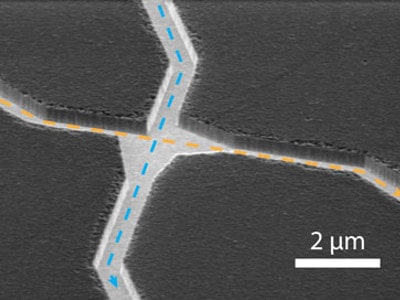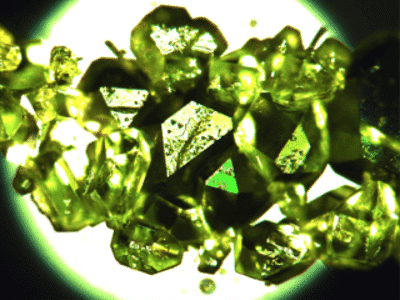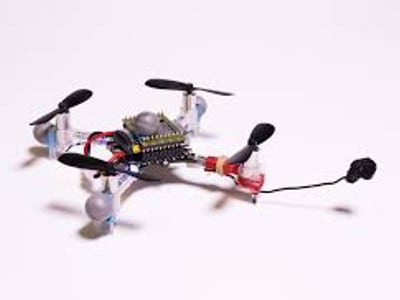McGill researchers unveil biological computer


A father-and-son duo are part of a team of researchers, led by Prof. Dan Nicolau, Sr., Chair of McGill University’s Department of Bioengineering, which has unveiled a biological computer that will be powered by Adenosine triphosphate (ATP), the substance the provides energy to biological cells as found in a human body.
In an article called “Parallel computation with molecular-motor-propelled agents in nanofabricated networks”, published this week in the Proceedings of the National Academy of Sciences (PNAS), the research team describes their work as a “first step” in building a model bio-supercomputer that operates smarter and uses far less energy and functions using proteins, and parallel networks in a very similar to the way that large supercomputers operate.
“We’ve managed to create a very complex network in a very small area,” says Nicolau, Sr., with a laugh. “This started as a back of an envelope idea, after too much rum I think, with drawings of what looked like small worms exploring mazes.”
ATP, which enables the transfer of energy between cells, is frequently referred to as a “molecular unit of currency”.
The circuit designed by the researchers is a 1.5 centimetre square, etched with channels through which move short strings of proteins, which the researchers call “biological agents”, powered by ATP to travel around the microchip.
In traditional computers, these protein strings, or “biological agents”, are instead replaced by electrons, which are propelled around the microchip by an electrical charge.
Using a combination of geometrical modelling and nano scale engineering, the team has modeled a computer consisting of “a specifically designed, nanostructured network explored by a large number of molecular-motor-driven, protein filaments.”
Nicolau, Sr. and his son, Dan Jr., began working on the idea over 10 years ago, and were joined seven years ago by a team of researchers from the Technische Universität Dresden and the Max Planck Institute of Molecular Cell Biology and Genetics, Dresden, as well as researchers from England, Sweden, the US, and the Netherlands.
Present-day computers solve problems very quickly, but sequentially. The research team has concocted a proof-of-concept parallel computer, meaning that it can solve problems much faster if its operations are performed in parallel, rather than sequentially, and is also highly scalable, error tolerant, and can be integrated with existing computer technology.
While the ultimate goal is to build a fully biological computer, approximately the size of a book, in the immediate future the researchers may try to develop a hybrid model composed of both computer and biology.
“It’s hard to say how soon it will be before we see a full scale bio super-computer,” says Nicolau, Sr. “One option for dealing with larger and more complex problems may be to combine our device with a conventional computer to form a hybrid device. Right now we’re working on a variety of ways to push the research further.”
The computer is much smaller and more energy efficient than computers powered by electricity, which require such huge amounts of electricity, and generate so much heat, that a supercomputer typically requires its own power plant in order to function.
This version of a computer chip will hardly heat up at all because it’s powered by biological agents and uses far less energy.
“This approach uses orders of magnitude less energy than conventional computers, thus addressing issues related to power consumption and heat dissipation,” write the researchers.
It is unlikely that any of the researchers cried out, “She’s alive! Alive!” at any point during their work, but it isn’t a huge metaphorical leap from “Bride of Frankenstein” to the reality of a fully biological computer, and especially sweet given that it was dreamed up by a father-son team, adding something extra to the “biological” aspect of the work.
The research was funded by The European Union Seventh Framework Programme; Defense Advanced Research Projects Agency; by NanoLund; by the Miller Foundation; by the Swedish Research Council; The Carl Trygger Foundation, German Research Foundation within the Cluster of Excellence Center for Advancing Electronics Dresden and the Heisenberg Program; and by Linnaeus University.

Terry Dawes
Writer


